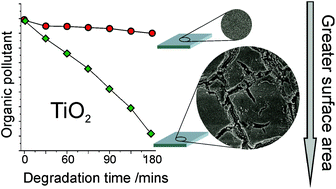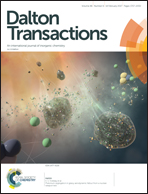Order of magnitude increase in photocatalytic rate for hierarchically porous anatase thin films synthesized from zinc titanate coatings†
Abstract
In this paper we report on the use of aerosol assisted chemical vapour deposition (AACVD) to form thin films of the zinc titanate phases using zinc acetate and titanium isopropoxide as precursors in methanol solution. Analysis by XRD and XPS found that through variation in experimental conditions we have been able to synthesize films of zinc titanate with composition of Zn2TiO4 or Zn0.3Ti2.7O4.94, which adopt the spinel and pseudobrookite structure respectively. In addition, we have also formed hybrid films of Zn2TiO4 with either ZnTiO3 or ZnO. Using a technique previously reported with powders, the mixed ZnO and Zn2TiO4 films were treated with acid to produce porous Zn2TiO4 which, through reduction and vapour leaching of zinc, were converted to hierarchically porous thin films of anatase TiO2. This conversion was monitored by XRD. Analysis of photocatalytic activity of the hierarchically porous titania, using dye and stearic acid degradation tests, found a factor of 12 to 14 increase in rates of photocatalysis over conventional TiO2 thin films. Finally we are able to report a maximum formal quantum efficiency for stearic acid degradation of 1.76 × 10−3 molecules per photon.



 Please wait while we load your content...
Please wait while we load your content...